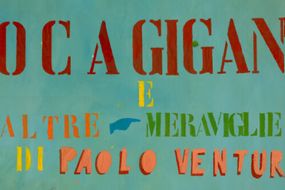From 26 February to 2 February 2026

Piazza Castello, Turin, Italy
Opening hours
| opens - closes | last entry | |
| monday | 24:00 - 24:00 | |
| tuesday | 10:00 - 18:00 | |
| wednesday | 10:00 - 18:00 | |
| thursday | 13:00 - 21:00 | |
| friday | 10:00 - 18:00 | |
| saturday | 10:00 - 18:00 | |
| sunday | 10:00 - 18:00 |
Friday, December 24 OPEN from 10 am to 2 pm (closed in the afternoon)
Saturday, December 25 CLOSED
Friday, December 31 OPEN from 10 am to 2 pm (closed in the afternoon)
Saturday, January 1 OPEN from 2 pm to 6 pm (closed in the morning)
Thursday, January 6 SPECIAL OPENING from 10 am to 9 pm

From 18 September to 8 February 2026
The giant goose and other wonders

Santa Margherita Palace, Modena

Artsupp Card: museum + exhibitions 5.00 €